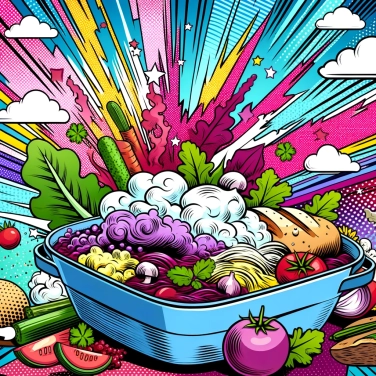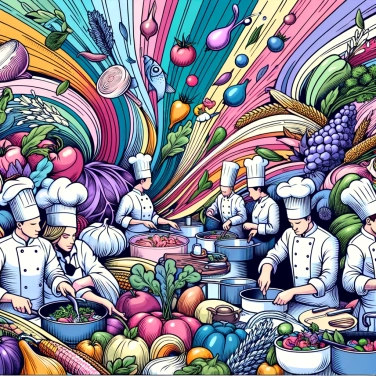In detail, for those interested!
Loss of flavor during refrigeration
Some flavors may seem to fade after the food has been refrigerated. This phenomenon is due to different chemical reactions that occur during storage at low temperatures. Indeed, refrigeration can alter the molecular structure of food, which can result in a loss of flavor. For example, molecules responsible for flavors can be affected by the cold, which decreases the taste perception. Moreover, some volatile substances responsible for flavors can evaporate more quickly when a dish is cooled, thus reducing its taste intensity. Additionally, refrigeration can also affect the texture of food, which can alter the way we perceive their taste.
Starch retrogradation process.
When starchy foods such as potatoes, rice, or pasta are cooled, a process called starch retrogradation occurs. This process refers to the restructuring of starch molecules after being heated and then cooled. During cooking, starch swells and absorbs water, giving it a soft texture. However, as it cools, starch molecules begin to reorganize and form crystalline zones.
These crystalline zones are less soluble in water than cooked starch, resulting in a firmer texture and sometimes a grainy appearance. This is why starchy foods like potatoes or rice may seem drier or harder after being refrigerated and reheated. This phenomenon is common in starchy foods and can affect their sensory quality.
Starch retrogradation can also be influenced by factors such as storage temperature and the time elapsed since cooking. Some foods may undergo multiple cycles of retrogradation if they are refrigerated, reheated, and then cooled again. This process can alter the texture and flavor of starchy foods, so it is important to take these changes into account when preparing meals in advance.
Improvement of flavors through resting time.
When a dish is left to rest in the refrigerator overnight, the flavors of the different ingredients have time to blend and develop. This resting period allows the aromas to intensify and marry, creating a richer and more complex flavor. Some dishes, such as soups, stews, or saucy dishes, benefit particularly from this resting time, as the different ingredients have time to release their flavors and spread them throughout the dish. This process of flavor maturation can transform a bland dish into a delicious culinary experience full of nuances.
![Explain why some countries change time zones?]()
![Explain why Alexander the Great refused to wear shoes.]()
![Explain why Alexander the Great always wore an impressive helmet.]()
![Explain why the last Chinese emperor was so young when he came to power?]()





















